Closing Time at the Louvre with Take Walks (Complete Review)
Is the Louvre the most impressive art collection in the world? I guess it probably depends on your definition of “impressive,” which to me means breadth across different time periods, and / or depth in one particular time period (for example, the Musée d’Orsay in impressionism).
Off the top of my head as I’m sitting here in Paris writing about it, I can’t think of another museum that even gets close. The Met in New York City is one idea, as is the excellent Prado Museum in Madrid (seriously, that museum is amazing). But neither touch the Louvre in terms of breadth or depth, really.
The Louvre is massive, and I’ve now experienced it three different times spread across a decade. Over that decade, I’ve learned a very, very important lesson.
That lesson? I’m terrible at navigating big art museums on my own. For a few years now, I will ONLY visit the big art museums with a guide, because the experience with and without a guide is incredibly different.
With someone to help focus your attention on the pieces and themes you should care about and who can bring depth and richness to them, you’re going to walk away with a more memorable experience where you’ll not only learn about specific pieces of art, but also about the history and culture that were happening in the world around those pieces.
In this guide, I’m going to walk you through my experience on a guided tour of the Louvre with Take Walks (who I have had nothing but great experiences with before) and Anatole, our passionate guide.
We did the Closing Time Tour, which takes place in the three hours leading up to when the Louvre closes, and has you visiting the Mona Lisa immediately before the museum closes, which is a different experience from just about every other time of day.
I’ll start with the basics – how long is the tour, how much is it, and what does it cover – and then go through our experience. In the end, I hope it will help you evaluate whether a) you want to take a guided tour or try to explore the Louvre on your own and b) it’s worth the price premium versus other tours for the smaller group and expert guide (spoiler: it absolutely is, in my humble opinion).
I want to make something super duper abundantly clear here, because I get frustrated when I see reviews and later find out that the tour was gifted to the writer, which means their opinion MIGHT be affected by the fact that they got it for free (spoiler: as someone who has done this and since decided never again, it definitely is).
I paid in full for this tour (for two people) with my own hard-earned money because it was something I legitimately wanted to experience. No sponsorship or gifted tour here! Just my relatively unfiltered thoughts on the tour, and whether it’s worth the money.
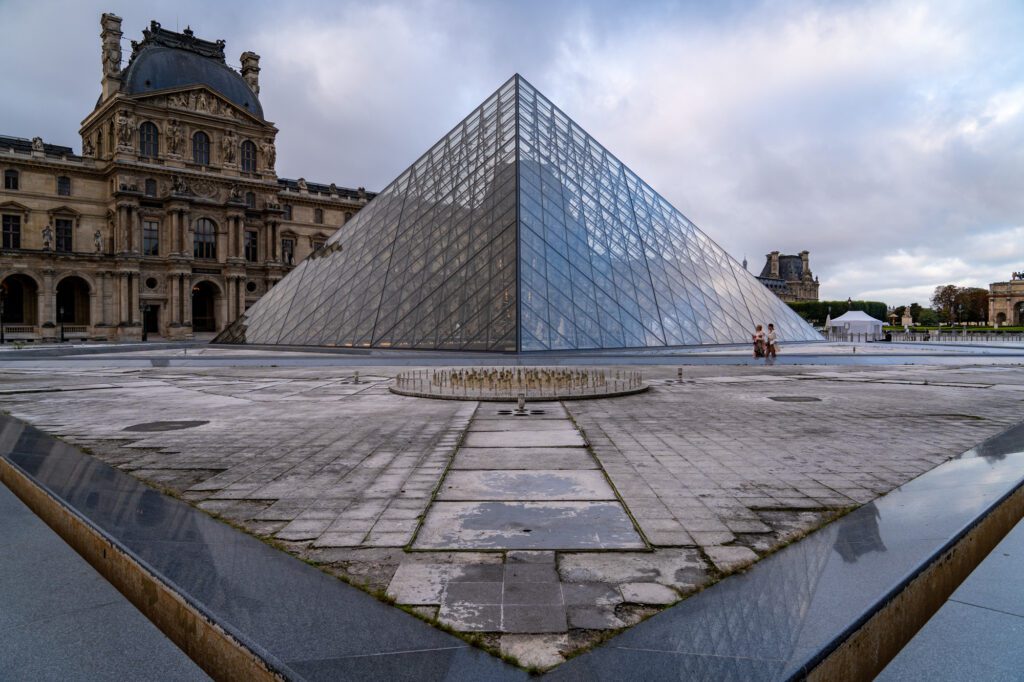
Disclaimer: Some of the links in this post, like hotel links, are affiliate links, meaning at no additional cost to you, we make a little bit of money if you click through and book. That being said, we would never recommend something to you that we don’t stand behind 100%.
Why I Loved the Closing Time Tour at the Louvre with Take Walks
Don’t have time to read the entire review below? Here’s what you need to know about the tour.
Overall, I’d highly recommend it. It’s more expensive than other tours, but it’s an hour longer, the guides that Walks uses tend to be better than other companies, and the max group size of 15 means you won’t be in a dreaded group of 50 clambering around with one guide trying to wrangle everyone.
- Duration: 3 hours
- Includes: Skip-the-Line Entrance to the Louvre (through the group entrance) with an expert guide who is well-versed in art history
- Max Group Size: 15 people
- Highlights: The fortress within the Louvre that tells you about its history, the wrongly-named Venus de Milo, a few French masterpieces, and a look at the Mona Lisa
- Cost: $86 per person (includes entry ticket to the museum)
Our Experience on the Closing Time Tour of the Louvre with Take Walks
First, you’ll meet outside the museum where you’ll be introduced to your guide and get hooked up with your audio equipment.

Now, a word on the whole headphones and radio thing. The first time we were handed one of these was actually on a Walks tour in Rome (the Colosseum tour we did, which you can read about here), and we were highly skeptical.
However, once we experienced it for ourselves (and chatted with our guide, who appreciated not having to yell to be heard over the other people around), we were on board.
After a brief introduction, you’ll get right into it. You skip the lonnnng lines at the main entrance and enter through the group entrance, which quite possibly saves an hour of your time, depending on when you’re in Paris.
Once you’re inside, you’ll start with learning about the building, and what purposes it has served over the course of history (something we didn’t know, and would have absolutely blown right by without a guide to stop us and draw attention to it).
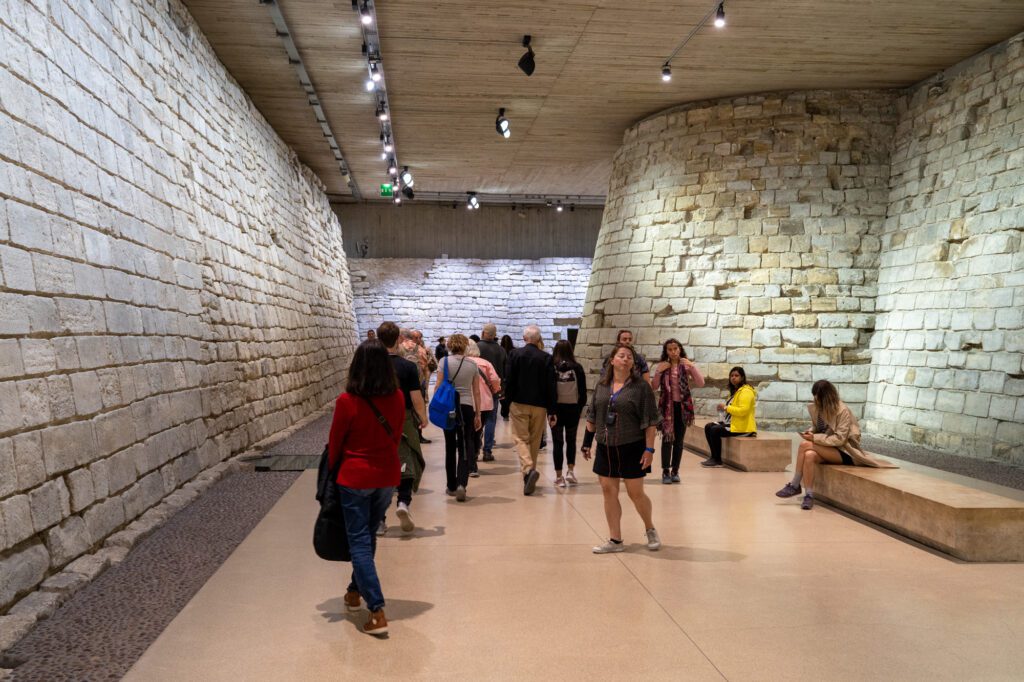
After a short bathroom break, you’ll start the real visit with sculptures – including the Greek originals – which includes the Venus de Milo.
You’ll walk around the Venus de Milo, and spend 15 minutes admiring her beauty while the guide talks through every detail of what we know about it (and what we don’t – you’ll have to use your imagination to picture what the arms were doing, because we have no clue!).
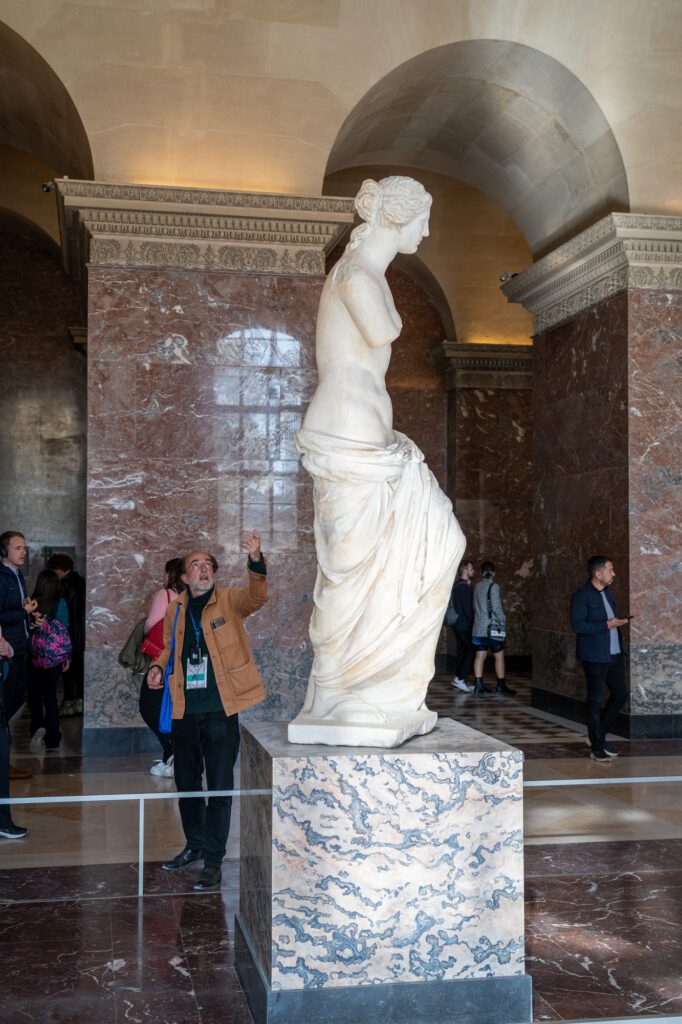
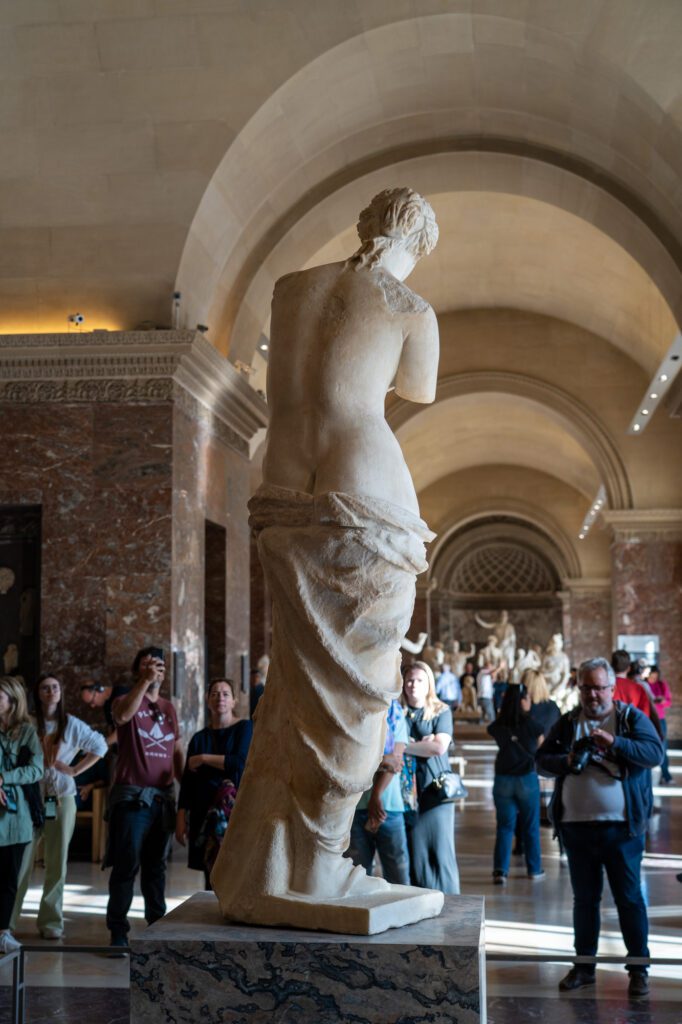
We also learned about the contrast between the bronze and stone sculptures, which require different poses (or additions) to make sure stone doesn’t break.
Roman sculptures were often copies of Greek sculptures, but in stone (rather than bronze) which meant they had to add support at the base to avoid the stone cracking.
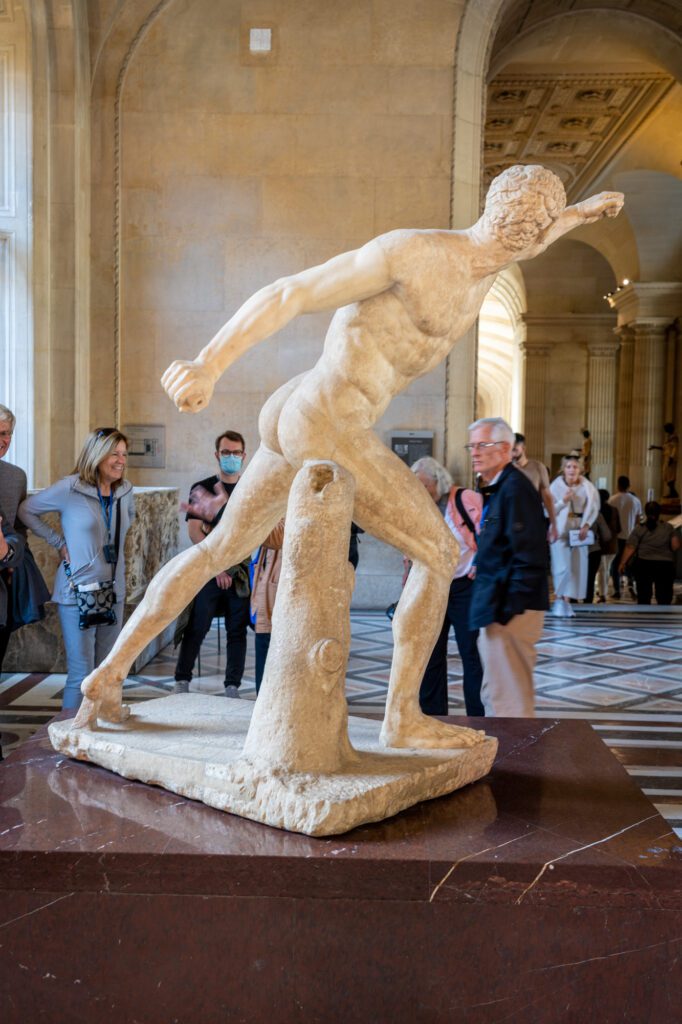
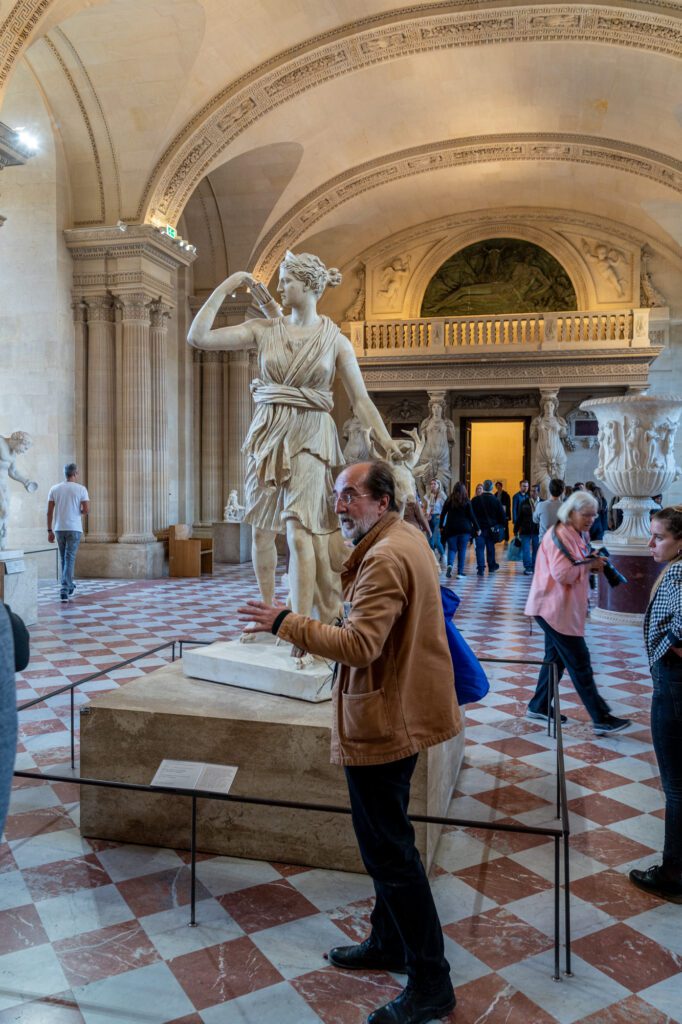
As you meander the many halls of the Louvre, Anatole would call our attention to pieces he thinks were interesting or illustrative of a broader trend, and spend a few minutes telling a story to really bring that piece of art to life.
The Winged Victory (which is supposedly the inspiration for the famous Nike swoosh), the French paintings (like Liberty Leading the People and the Raft of Medusa), and some of the other Da Vinci works aside from the Mona Lisa were our favorite stops.
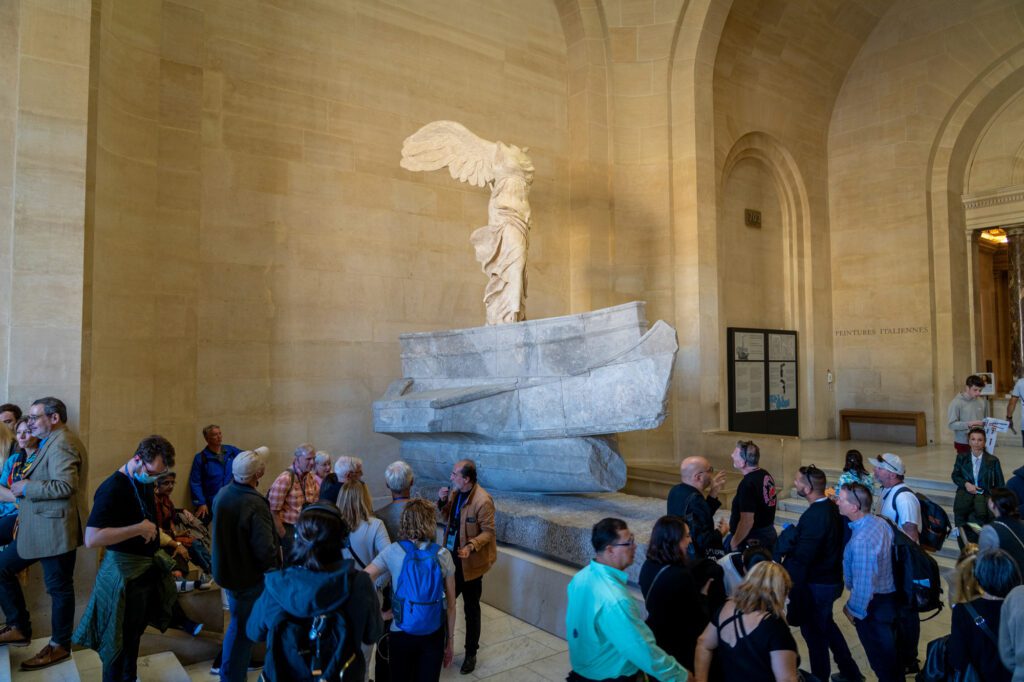
The most fascinating thing we learned from Anatole is that all of the huge paintings you see that were painted centuries ago have visible seams, which he pointed out on the Crowning of Napoleon, because they could not make canvases big enough for them out of a single piece, so they had to stitch several sheets together.
And, finally, just as you’re looking at your watch while the French voice over the loudspeaker tells you that the museum is closing in 15 minutes, you arrive at the Mona Lisa.
At nearly every other time of day, this room is teeming with tourists, all trying to claw their way to the front of the room to get a closer look at (the most overrated painting in the world) the Mona Lisa.
You have to be at the front of the room, because it’s surprisingly small.
So, Was The Guided Tour of the Louvre Worth It?
Yeah, I truly think this tour was worth the time and money.
In general, I highly recommend guided tours of big museums with massive collections of art spanning centuries. In fact, I basically won’t do that museum UNLESS I have a guided tour to join, because I just won’t get anything out of it.
When I say that to some people, they’re skeptical. Like my friend Spencer, who was my plus-one in Paris (Alysha couldn’t make the trip this time) when I did this tour.
After the tour, Spencer agreed that a guided tour is the way to go.
Now, there are literally hundreds of different Louvre tours to choose from, so what should you look for in a tour?
The first thing is group size. A group size of 15 is the top end of what we’d consider. Anything over that and you lose all of the personal interaction with the guide, like the brief exchanges you’ll get as you’re moving through the museum from one room to the next. Most of them, in this case, were our guide playfully poking fun at me, specifically, which I enjoyed. We saw groups of 40-50 moving through the museum, and it looked like a nightmare.
The second thing is the expertise of the guides. Having recently done a tour of the Uffizi Gallery in Florence that was pretty lackluster (the tour guide was just a guide – should have gone with Take Walks!), it absolutely matters whether your guide is an expert in art history. Take Walks has the highest quality guides of any tour company we’ve experienced, and in this particular case, you could feel Anatole’s passion as he waxed poetic about the sculptures and paintings we stopped to admire.
The third thing is the amount of time. Some tours are only two hours long. After the logistics of meeting and entering the museum, you’ll be left with ~90 minutes inside, which isn’t nearly enough time. Three hours is still fast, but it’s significantly better than two.
The last thing is the time of day. The morning at the Louvre is going to be a zoo (unless it’s, say, January). That’s the main reason we chose the Closing Time tour – to be in the museum at a time where you don’t have to wait 30 minutes to see the Mona Lisa (and we walked right up to her!).
Spoiler alert: The Closing Time Tour checks all of these boxes, which is why we booked it in the first place for ourselves, and are recommending you do the same if you want to get the most out of your visit to the Louvre and its extensive collection.
Tips for Your Visit to the Louvre
Here are some tips for planning your visit to the Louvre.
Go on a Friday if you can, when the museum is open late and the tour takes place after dark!
No big backpacks – They will not be allowed in the museum, and you will have to miss the tour.
No bathroom breaks in the middle of the tour – Only at the beginning and end, which is around two hours without a bathroom.
More Paris Travel Guides
Planning a trip to Paris? Matt, who speaks French “really well for an American” (as multiple French people have told him – it’s his proudest achievement in life), loves Paris.
As you get into planning your trip, you might find some of these other detailed guides we’ve written about Paris helpful.
